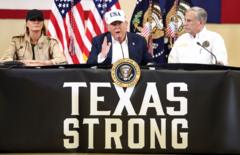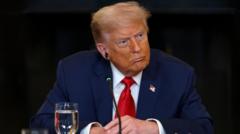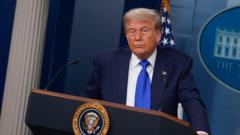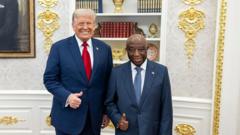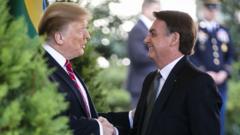**As President Trump's administration extends tariffs deadlines, it faces increasing backlash from global trading partners and economic setbacks.**
**Trump's Tariff Promises Fade as Global Trade Tensions Rise**
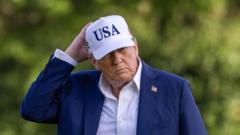
**Trump's Tariff Promises Fade as Global Trade Tensions Rise**
**US tariffs see delays as international trade relations grow strained amidst economic challenges.**
In an unexpected twist, President Trump's administration has announced a delay in implementing tariffs, initially billed as "reciprocal," undermining earlier ambitions of securing "90 deals in 90 days." The revised deadline has been pushed back from Wednesday to 1 August, suggesting further postponements could follow. Treasury Secretary Scott Bessent declared that focus remains on the 18 nations responsible for 95% of America's trade deficit, but the lack of tangible agreements has drawn skepticism.
The recent letters dispatched to trading nations evoke memories of the controversial "Liberation Day" blue board, revealing little change from the tariffs projected earlier this year. There seems to be a widespread belief in rolling delays, with observers adopting a theory that Trump may retreat when faced with mounting pressure, which could ultimately exacerbate tensions across the board.
Both Japan and South Korea expressed discontent with the US strategy, with Japan's finance minister hinting at utilizing its substantial holdings of US government debt as potential leverage. Meanwhile, the global markets are responding to the uncertainties surrounding the trade dynamics, as American retailers voice concerns over possible price increases and supply shortages.
Significantly, the value of the dollar has experienced a 10% decline against various currencies in 2023, contrary to Bessent's predictions of a dollar increase countering inflation from tariffs. The evolving trade numbers depict a troubling landscape, with a notable decrease in Chinese exports to the US by 9.7% this year, while China finds growing markets elsewhere, especially in the UK and Africa.
While US Treasury revenues from tariffs saw record highs in May, the long-term implications of increased tariff rates—now averaging around 15%—could lead to a shift in global trade patterns. The world may increasingly seek alternative trading partners, illustrated by burgeoning economic agreements between nations like the UK and India and the EU and Canada. For now, markets remain steady in the face of these developments, but the future may hold more volatility as this trade saga continues to unfold.
The recent letters dispatched to trading nations evoke memories of the controversial "Liberation Day" blue board, revealing little change from the tariffs projected earlier this year. There seems to be a widespread belief in rolling delays, with observers adopting a theory that Trump may retreat when faced with mounting pressure, which could ultimately exacerbate tensions across the board.
Both Japan and South Korea expressed discontent with the US strategy, with Japan's finance minister hinting at utilizing its substantial holdings of US government debt as potential leverage. Meanwhile, the global markets are responding to the uncertainties surrounding the trade dynamics, as American retailers voice concerns over possible price increases and supply shortages.
Significantly, the value of the dollar has experienced a 10% decline against various currencies in 2023, contrary to Bessent's predictions of a dollar increase countering inflation from tariffs. The evolving trade numbers depict a troubling landscape, with a notable decrease in Chinese exports to the US by 9.7% this year, while China finds growing markets elsewhere, especially in the UK and Africa.
While US Treasury revenues from tariffs saw record highs in May, the long-term implications of increased tariff rates—now averaging around 15%—could lead to a shift in global trade patterns. The world may increasingly seek alternative trading partners, illustrated by burgeoning economic agreements between nations like the UK and India and the EU and Canada. For now, markets remain steady in the face of these developments, but the future may hold more volatility as this trade saga continues to unfold.

